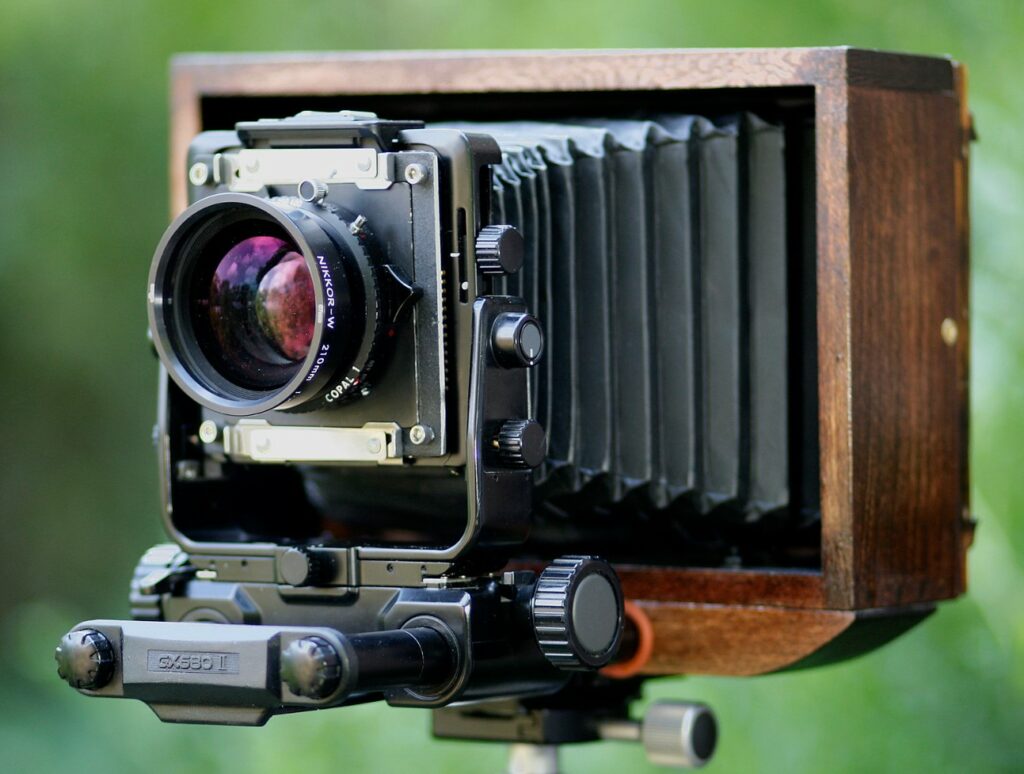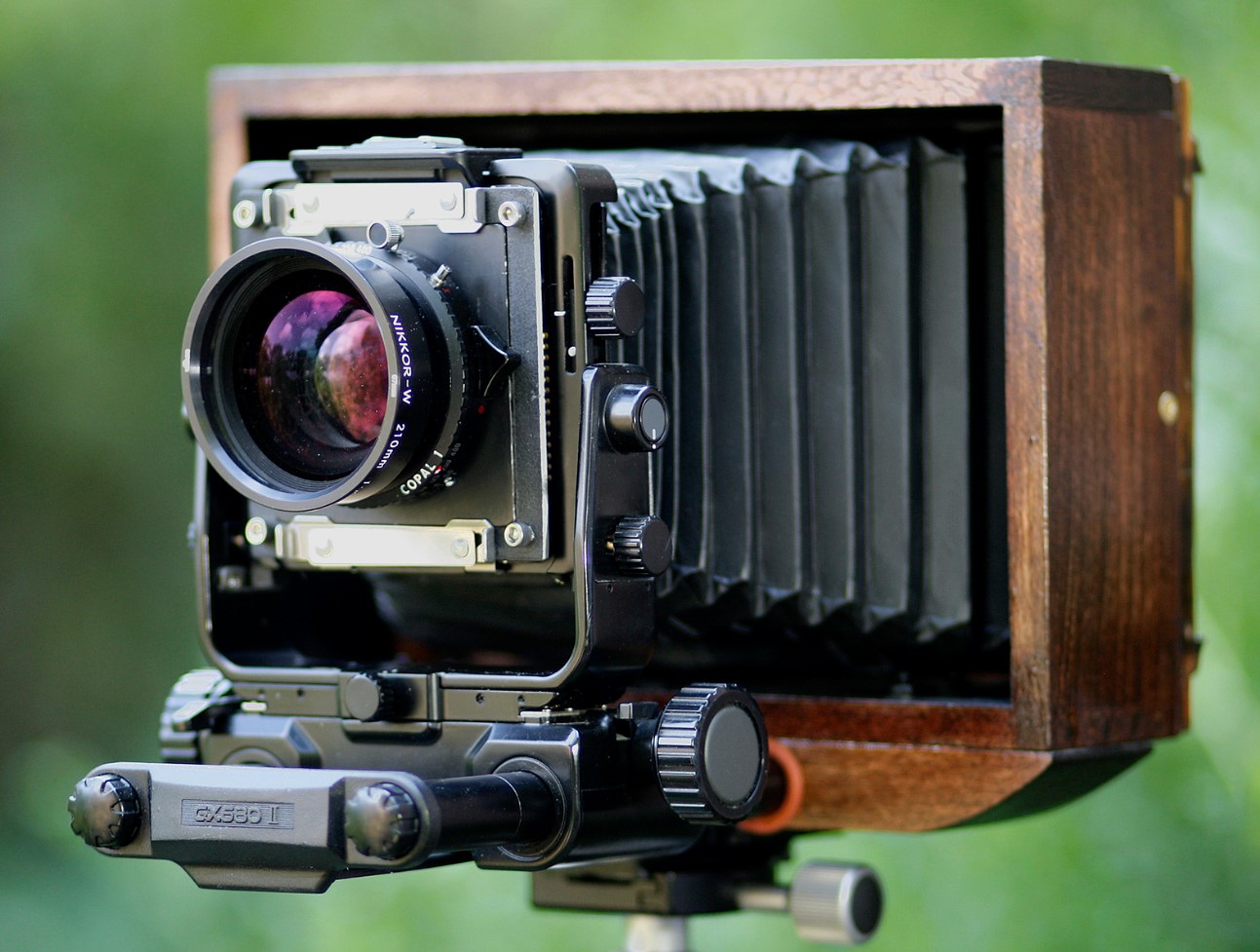Welcome to our blog where we delve into the fascinating world of film photography. In this article, we will take you on a journey to understand the mechanics and technicalities of a View Camera Film Camera. Whether you’re an amateur or a seasoned photographer, this in-depth exploration will open your eyes to the intricate workings of this classic device. Dive in, and prepare to be enthralled!
Table of Contents
- The Basics: What is a View Camera?
- The Bellows: Navigating the Flexible Connection
- Focusing with Precision: The Ground Glass Screen
- Interchangeable Lenses: Expanding Your Creative Possibilities
- Shutter Mechanism: Timing is Everything
- Operating a View Camera: Patience and Precision
- Choosing the Right Film: Exploring Different Formats
- Maintaining and Troubleshooting: Keeping your Camera in Top Shape
- The Digital Frontier: Merging Traditional and Modern Technologies
- The Timeless Appeal of Film Photography
- Techniques for Working with a View Camera
- Frequently Asked Questions
- What is a view camera film camera?
- How does a view camera film camera work?
- What are the advantages of using a view camera film camera?
- What are the main camera mechanics involved in a view camera film camera?
- Is it difficult to use a view camera film camera?
- Where can I buy a view camera film camera?
- Can I use digital lenses with a view camera film camera?
- Are view camera film cameras still relevant today?
- Wrap Up
The Basics: What is a View Camera?
A view camera, also known as a large format camera, is a type of film camera that provides precise control over perspective, focus, and depth of field. While modern digital cameras dominate the photography scene, view cameras have a unique charm and offer unparalleled image quality. They consist of a bellows mechanism, a ground glass focusing screen, and detachable lenses, making them highly versatile.
One of the defining characteristics of a view camera is its bellows mechanism. The bellows, typically made of leather or synthetic materials, act as a light-tight accordion-like housing that allows for adjustable extension and movement of the lens and film plane. By extending or compressing the bellows, photographers gain control over perspective, enabling the correction of distortion and tilting for creative effects.
Focusing with Precision: The Ground Glass Screen
On the rear of a view camera, you’ll find a ground glass focusing screen. This large, translucent surface is crucial for achieving precise focus and composing the image. By viewing the scene on the ground glass, photographers can adjust the lens position until they achieve the desired focus and framing. This step requires patience and practice, but the results are well worth the effort.
Interchangeable Lenses: Expanding Your Creative Possibilities
View cameras are designed with interchangeable lenses to provide photographers with a range of creative options. Lenses come in various focal lengths, offering different perspectives and levels of compression. With wide-angle lenses, you can capture expansive landscapes, while telephoto lenses are ideal for isolating subjects with a compressed background. Each lens choice brings a unique look and feel to your photographs.
Shutter Mechanism: Timing is Everything
Unlike most modern cameras with built-in shutters, view cameras often require an external shutter or a lens mounted on a shutter-equipped lens board. This shutter mechanism ensures precise control over exposure time, allowing photographers to create long exposures for low-light scenes or minimizing motion blur in fast-paced subjects. Mastering shutter techniques is essential for unleashing the full potential of a view camera.
Operating a View Camera: Patience and Precision
Using a view camera demands a meticulous and deliberate approach. From setting up the tripod to adjusting the bellows and composing the image on the ground glass, every step requires attention to detail. It’s a process that tests your patience and rewards you with a deep understanding of photography mechanics. The more you practice, the more you’ll appreciate the artistry and craftsmanship behind each captured image.
Interest Fact:
Did you know that some view camera lenses are so large and heavy that photographers use a separate cart just to transport them? These mammoth lenses can weigh multiple kilograms and provide unrivaled image quality.
Choosing the Right Film: Exploring Different Formats
Another advantage of using a view camera is the ability to work with various film formats. From 4×5 inch to 8×10 inch, each format offers distinct characteristics and image quality. The larger the film size, the more detail and resolution you can capture. However, keep in mind that larger film sizes require more time, effort, and equipment. It’s important to choose a film format that aligns with your artistic vision and technical considerations.
Maintaining and Troubleshooting: Keeping your Camera in Top Shape
View cameras are precision instruments that require periodic maintenance to ensure optimal performance. Regularly checking the bellows and lens boards for light leaks, cleaning the ground glass, and lubricating moving parts are essential tasks. When issues arise, troubleshooting steps such as diagnosing lens misalignment or resolving shutter malfunctions can help you keep the camera in top shape. A well-maintained view camera will accompany you on countless photographic journeys.
The Digital Frontier: Merging Traditional and Modern Technologies
In today’s digital age, some photographers have integrated digital backs with view cameras. This fusion of traditional film mechanics and digital sensors offers the best of both worlds. It allows photographers to leverage the meticulous control and image quality of view cameras while enjoying the convenience and flexibility of digital processing. This hybrid approach allows for endless creative possibilities and serves as a bridge between the past and future of photography.
The Timeless Appeal of Film Photography
Despite advancements in digital technology, film photography continues to captivate artists and enthusiasts alike. The slow and deliberate process, the tangible nature of physical film, and the carefully crafted images evoke a sense of nostalgia and artistic authenticity. Understanding the mechanics of a view camera film camera not only enhances your technical skills but also deepens your appreciation for the timeless art of film photography.
Techniques for Working with a View Camera
Now that you have a basic understanding of the mechanics let’s explore some essential techniques that will enhance your view camera photography:
1. View Camera Movements
One of the unique advantages of a view camera is the ability to manipulate perspective and focal plane through camera movements. By tilting, swinging, or shifting the front and/or back standards, you can control the plane of focus, correct converging lines, and create interesting visual effects.
2. Focusing Techniques
Focusing with a view camera requires patience and precision. As the image projected onto the ground glass is usually upside down and reversed, you’ll need to master the technique of using the loupe and focusing cloth to achieve tack-sharp focus. Take your time, and remember to make small adjustments until your desired subject is sharp.
3. Exposure Control
With view cameras, precise exposure control is crucial. As you don’t have a built-in light meter, using an external light meter or a handheld meter is essential. You’ll need to measure incident light or use the spot metering technique to determine the correct exposure settings for your film. Don’t forget to factor in the bellows extension when calculating exposure.

Understanding the mechanics and techniques of a view camera film camera is a rewarding journey for any film photography enthusiast. By familiarizing yourself with the components and functions of a view camera and mastering various techniques, you can elevate your photography to new heights. So grab your view camera and start exploring the endless creative possibilities it offers!
Frequently Asked Questions
What is a view camera film camera?
A view camera film camera is a type of camera that allows photographers to capture images on a large format film. It consists of a flexible bellows, a ground glass focusing screen, and interchangeable lenses.
How does a view camera film camera work?
A view camera film camera works by using a bellows system to adjust the distance between the lens and the film plane, allowing for precise focusing. The image is projected onto a ground glass screen where the photographer can compose and focus the shot before capturing it on film.
What are the advantages of using a view camera film camera?
Using a view camera film camera gives photographers unparalleled control over their images. The large format film used in these cameras captures an immense amount of detail and has a unique aesthetic quality. Additionally, the ability to adjust every aspect of the camera’s mechanics allows for precise control over perspective correction and depth of field.
What are the main camera mechanics involved in a view camera film camera?
The main camera mechanics involved in a view camera film camera include the bellows, which allows for focusing and adjustment of the distance between the lens and the film plane; the front and rear standard, which hold the lens and film respectively; and the focusing rail, which allows for precise focusing.
Is it difficult to use a view camera film camera?
Using a view camera film camera can be more challenging compared to modern digital cameras. It requires a good understanding of camera mechanics, composition, and film processing. However, with practice and patience, photographers can achieve remarkable results.
Where can I buy a view camera film camera?
You can buy view camera film cameras from specialty camera stores, online marketplaces, or second-hand camera shops. It’s important to do your research and ensure you are purchasing from a reputable seller.
Can I use digital lenses with a view camera film camera?
No, view camera film cameras use large format lenses specifically designed for film photography. These lenses are not compatible with digital cameras.
Are view camera film cameras still relevant today?
While digital photography has become the norm, view camera film cameras still have a dedicated following among professional and passionate photographers. The unique qualities and the level of control they offer make them highly valued for artistic and commercial purposes.
Wrap Up
Understanding the mechanics of a view camera film camera is essential for any film photography enthusiast. By delving into the technicalities, you gain a deeper appreciation for the art and craft of capturing images on film.
Remember, a view camera offers a unique experience, allowing you to experience the magic of creating images in a deliberate and precise manner. Taking the time to master camera mechanics can greatly enhance your skills as a photographer.
If you found this blog helpful, or if you have any questions or experiences to share, I encourage you to engage and leave a comment. Let’s continue the conversation and inspire each other on our journey through the world of film photography!
